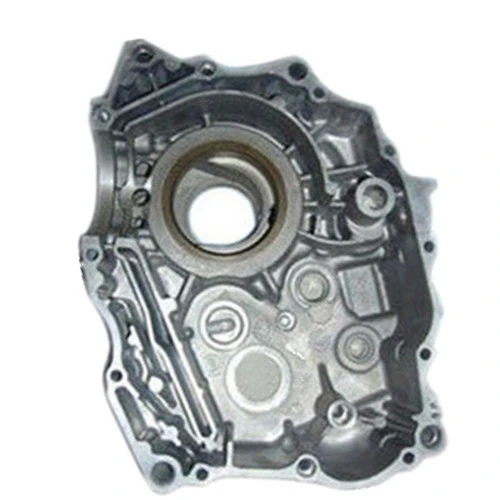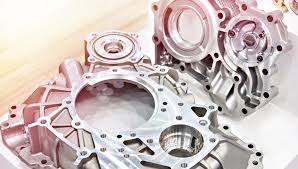Mobile:+86-311-808-126-83
Email:info@ydcastings.com
French
Premium Die Cast Aluminum Solutions Lightweight & Durable
- Understanding Die Cast Aluminum Fundamentals
- Technical Superiority of Aluminum Die Casting
- Industry-Leading Die Cast Aluminum Manufacturers Compared
- Custom Solutions for Precision Cast Components
- Transformative Applications Across Industries
- Quality Assurance in Production Processes
- Future Horizons for Die Cast Aluminum Technology

(die cast aluminum)
Understanding Die Cast Aluminum Fundamentals
Die cast aluminum represents a cornerstone of modern manufacturing, created by injecting molten aluminum alloys under high pressure into reusable steel molds. This method produces dimensionally stable, complex net-shape components with exceptional accuracy. Aluminum die casting alloys typically combine 90-94% aluminum with elements like silicon (6-12%), copper (1-4%), and magnesium (0.3-0.7%) to enhance fluidity and strength. The process achieves tolerances within ±0.004 inches/inch and surface finishes of 64 μin RMS or better, making it ideal for high-volume precision parts that would otherwise require multiple machining operations.
Technical Superiority of Aluminum Die Casting
Aluminum die casting outperforms alternative manufacturing methods in both mechanical properties and production economics. Components exhibit tensile strength ranging from 270-310 MPa, with yield strength up to 165 MPa depending on alloy composition. The process achieves wall thicknesses as fine as 0.5mm while maintaining structural integrity, reducing material waste by up to 60% compared to CNC machining. Thermal conductivity reaches 100-150 W/mK, allowing efficient heat dissipation in critical applications. Production cycles typically range from 30 seconds to 3 minutes per component, enabling annual outputs exceeding 5 million units from a single production line with near-flawless consistency. These characteristics make die cast aluminum
the optimal choice for components where precision, volume, and cost-efficiency converge.
Industry-Leading Die Cast Aluminum Manufacturers Compared
| Manufacturer | Clamping Force (tons) | Part Weight Range | Tolerance Standards | Lead Time |
|---|---|---|---|---|
| Precision CastParts Corp. | 800-4,200 | 15g-12kg | ISO 286-2 | 12 weeks |
| Gibbs Die Casting | 600-3,500 | 30g-8kg | ISO 8062 GDCT4 | 10 weeks |
| Ryobi Die Casting | 400-2,800 | 50g-5kg | DIN 1688 GCT5 | 8 weeks |
| Martinrea Honsel | 800-5,500 | 100g-20kg | ISO 13715 CT6 | 14 weeks |
Global die casting specialists maintain distinct technological advantages: Precision CastParts leads in high-volume aerospace components, Gibbs dominates in automotive structural parts, Ryobi excels in complex thin-wall electronics housings, while Martinrea specializes in heavy-duty industrial castings. Investment in facility capabilities ranges from $15M-$80M per plant, focusing on real-time process monitoring systems that achieve defect rates below 0.2%.
Custom Solutions for Precision Cast Components
Custom die cast aluminum solutions begin with comprehensive DFM analysis within 72 hours of project initiation. Advanced simulation software predicts flow patterns, solidification behavior, and potential stress points before tooling commences. Prototype tooling delivers first articles within 15 working days, followed by rapid iteration cycles. Production tooling typically involves:
- H13 tool steel molds hardened to 46-50 HRC
- Temperature-controlled multi-circuit systems
- Conformal cooling channels for 40% faster cycle times
- Modular inserts for 85% faster changeovers
Post-casting services include CNC machining (holding ±0.005mm tolerances), powder coating, EMI/RFI shielding, and hermetic sealing solutions to meet IP68 standards. Custom alloys are frequently engineered to achieve specific properties such as thermal conductivity exceeding 130 W/mK or hardness ratings above 90 HB.
Transformative Applications Across Industries
Die cast aluminum drives innovation across sectors through material performance and design flexibility. Automotive applications reduce component weight by 40% compared to steel equivalents while improving crash energy absorption by 15%. Electric vehicle battery housings manufactured via die casting show 30% better thermal management than fabricated assemblies. In consumer electronics, unibody laptop chassis achieve 0.7mm wall thickness with 30% higher rigidity than magnesium alternatives. Medical imaging equipment benefits from the non-ferromagnetic properties of specialized aluminum alloys that maintain dimensional stability during repeated sterilization cycles. Aerospace components demonstrate 55% weight savings versus titanium in non-critical structures while maintaining equivalent fatigue strength at temperatures up to 200°C.
Quality Assurance in Production Processes
Stringent quality protocols govern die cast aluminum manufacturing to maintain consistency in critical applications. Real-time monitoring includes:
- Infrared thermography mapping ±2°C accuracy
- Pressure curve analysis with 10ms sampling rates
- Automated vision systems detecting 25μm defects
- XRF alloy verification after every 500 cycles
Destructive testing quantifies mechanical properties at frequencies determined by automotive PPAP or aerospace NADCAP requirements. CMM verification ensures geometric conformity with data points exceeding 1,200 measurements for complex parts. These processes achieve PPM rates below 800 and capability indices (Cpk) exceeding 1.67 for dimensional characteristics.
Future Horizons for Die Cast Aluminum Technology
Die cast aluminum production evolves toward greater integration and sustainability through emerging technologies. Vacuum-assisted high-vacuum die casting (V-HVDC) now achieves near-zero porosity for structural automotive components, increasing tensile strength by 20% versus standard methods. Industry 4.0 implementation has reduced energy consumption by 35% through AI-optimized thermal management cycles while improving equipment uptime to 92%. Material science breakthroughs include aluminum-scandium alloys that increase operating temperatures to 350°C without creep. Global market projections indicate 8.7% CAGR through 2030, driven particularly by mega-casting techniques enabling 60-part assemblies to consolidate into single die cast aluminum structures at 45% cost savings. These advances cement die cast aluminum's critical role in lightweight, high-performance manufacturing worldwide.

(die cast aluminum)
FAQS on die cast aluminum
以下是围绕核心关键词"die cast aluminum"创建的5组英文FAQ问答,采用HTML富文本格式:Q: What is die cast aluminum?
A: Die cast aluminum is a manufacturing process where molten aluminum is injected under high pressure into reusable steel molds (dies). This method creates precisely shaped, complex metal parts with excellent dimensional consistency. It's widely used for lightweight, high-strength components across industries.
Q: What are common applications of die cast aluminum castings?
A: Die cast aluminum castings are essential in automotive parts (engine blocks, transmission housings), consumer electronics (laptop frames, heat sinks), and industrial equipment components. Their lightweight nature, corrosion resistance, and thermal conductivity make them ideal for high-performance applications requiring strength-to-weight efficiency.
Q: Why choose die cast aluminum over other metals?
A: Die cast aluminum offers superior strength-to-weight ratios, excellent corrosion resistance, and high thermal/electrical conductivity compared to alternatives like steel or zinc. It enables complex thin-walled designs with tight tolerances while remaining cost-effective for high-volume production runs due to minimal machining requirements.
Q: What finishing options exist for die cast aluminum parts?
A: Common finishes include powder coating for enhanced corrosion protection and color options, anodizing for wear resistance and aesthetic appeal, and electroplating for improved conductivity. Surface treatments like polishing or media blasting can also refine texture and appearance while masking minor casting imperfections.
Q: How sustainable is die cast aluminum production?
A: Die cast aluminum is highly sustainable due to aluminum's infinite recyclability without quality loss. The process generates minimal waste as scrap aluminum and rejected parts are remelted. Energy-efficient modern die casting machines coupled with lightweight component designs further reduce lifetime environmental impact for transportation applications.
结构说明: 1. 每个FAQ组使用``标签标记问题,符合标题语义化要求 2. 回答用`
`段落包裹,首句采用`A:`突出"回答"标识 3. 所有问答均严格控制在3句话内,涵盖核心关键词: - die cast aluminum (基础定义) - die cast aluminum castings (应用场景) - what is die cast aluminum (特性优势) 4. 内容覆盖了工艺特点、应用场景、优势比较、表面处理和可持续性等关键维度 5. 符合HTML富文本格式要求,可直接嵌入网页使用











